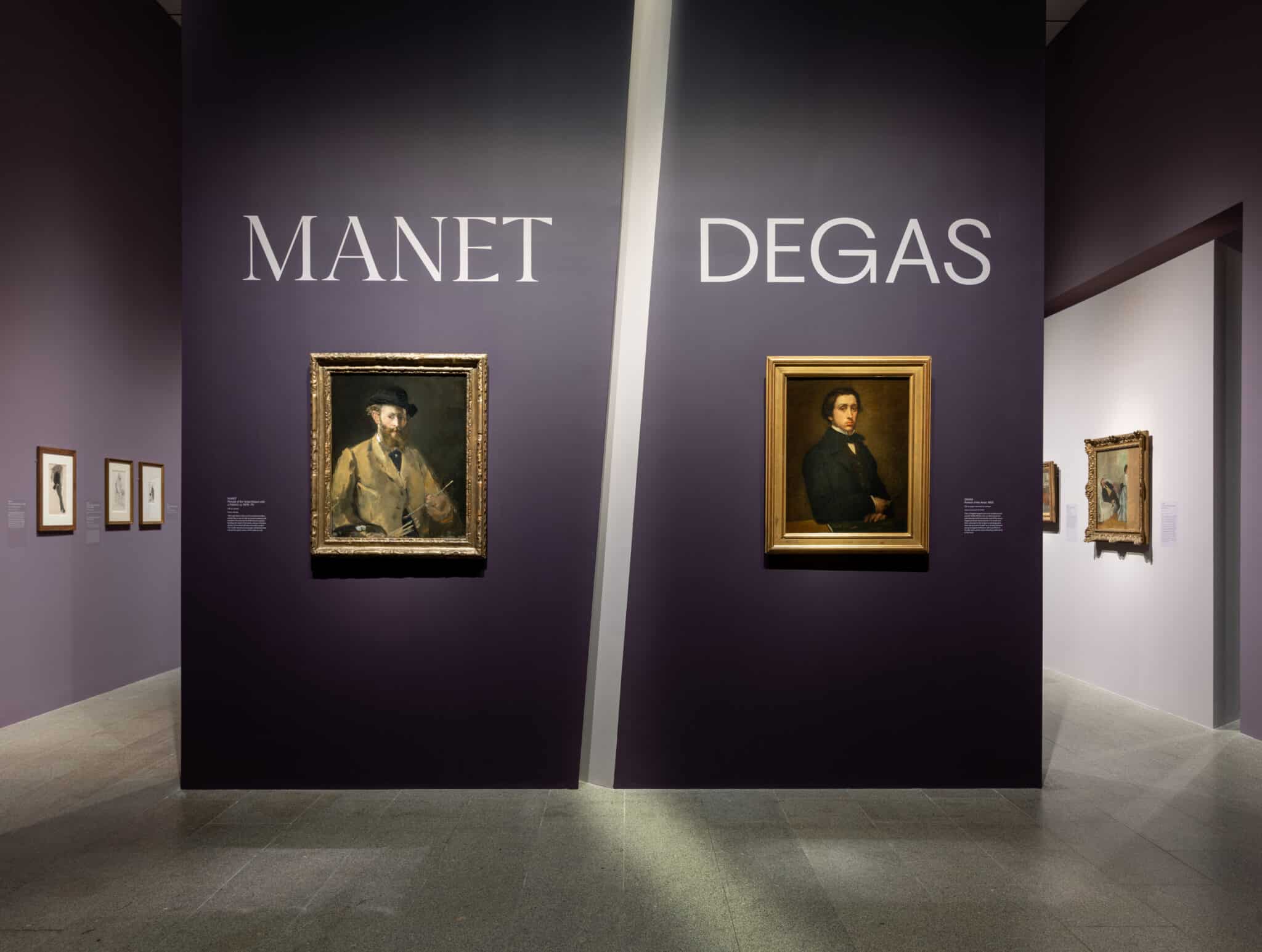Portraits of French artists Édouard Manet and Edgar Degas. Photo courtesy of The Met museum
Around the holidays, I like to treat myself with a solo trip to The Metropolitan Museum of Art (The Met). Something about the cold air, the holiday lights, and art really go together in my mind. This year my visit coincided with the arrival of new exhibits at the museum.
I planned to glaze up the new exhibit of Manet/Degas featuring the works of Édouard Manet and Edgar Degas. I wanted to make a case why the public should view this important show, but I struck out. I’ve never questioned my purpose as much as I did in the Manet/Degas gallery.
The paintings were as magnificent as expected, but the museum experience got in the way of enjoying it all. A large culture-seeking crowd in a small space made for an uncomfortable and disappointing trip.
I came to The Met on a busy day and got in quickly despite the lines because I used the little-known education entrance. I hurried to the third floor where the exhibit was hung. This is where the trouble began.Visitors must join a virtual queue to enter the gallery. If it’s too busy, this queue can suddenly close for the day. It’s also tough to find the QR code to get onto the queue in the first place. The code is located down a long hallway far apart from Manet/Degas. I was lucky enough to get away with a 15 minute wait because I was only one person. But the wait times can last two hours according to the digital queue website. On top of all of that, I was carrying my big bag because the coat-check line was insanely long and my shoulder hurt.
When I finally entered the exhibition, the other visitors and I found text that read “MANET” and “DEGAS” with self-portraits of each artist under their name. The portraits were set against a simple purple mauve wall. Like many I stopped to take a photo that didn’t come out so great then entered the first part of the exhibit.
I was in a room with beautiful paintings and interesting text on the wall, but I found myself more transfixed by the crowds of people moving through it all. I felt like a sardine in a can, and a sweaty one at that.
Seeing two 19th-century masterworks together, most on loan from the Musées d’Orsay et de l’Orangerie in Paris, is a special thing. There are some really famous paintings on display, like Olympia, The Races at Longchamp, and Study for ‘Déjeuner sur l’herbe.’ The magnificence of these pieces and the importance of this exhibition is what this article was supposed to be about.
And the cherry on top I was here to report about the exhibit and no one wanted to talk to me! I tried to get people to comment on what they saw or why they were there. You would’ve thought I was a solicitor the way that just about everyone said “Sorry, not interested.”
The exhibit tracks the relationship between Manet and Degas, but to be honest, I couldn’t tell you about it. I couldn’t stop to read the blocks of text. Either it was impossible to get close enough, or everything in my body was screaming to get out of there because of the sheer number of people in the room. The tide of people was constantly turning, and it was only a matter of time until I washed up dazed and confused.

A series of paintings displayed on the wall, by Édouard Manet and Edgar Degas. Photo courtesy of The Met museum
I felt silly and like a phony, looking at these paintings like I knew what they meant. They were beautiful, that’s for sure, but I couldn’t offer up a deeper analysis. The one blurb I managed to read was for The Spanish Singer by Manet, and it said that the man who posed as the subject couldn’t play guitar. Yet Manet wanted it in the painting. The text went on to say that you could gather this from his hand positions on the guitar, and how they suggested he was unfamiliar with it. This is how it felt to walk through this exhibit. I tried the stop-and-ponder, a move that is a staple at art museums. And just when you think you’ve got it, some tourist pushes past you to snap a picture on their phone before they move on to the next painting.
Lost, I attempted to lean-in to people who seemed to know what they were talking about. You’ve seen them: learned types who talk with their hands, typically prattling on about composition. I approached an older woman and her husband for a comment because she seemed to really engage with these paintings. I introduced myself, and asked if she’d like to comment on all this. She simply shook her head and said, “Sorry, but I really don’t know what to say. I just like art and can’t really express it perfectly.”
I was floored by this comment. The woman had summed up just what I was feeling.
Most of us know nothing. But we like to pretend that we do. We desperately want to know what’s going on. So we come to these shows and exhibitions, hoping to better ourselves and change something, or come to a realization like Cameron in Ferris Bueller’s Day Off. In a place like The Met, it’s easy to feel small. It’s easy to feel unsophisticated. For God’s sake, I came to this exhibit wearing Uggs and a cropped CBGB’s shirt if you want the details. We all don’t have an art history degree under our belt. I certainly don’t.
But in the long run, you succumb to the magic of The Met. Despite the crowds, the pushing, and the endless photo-takers, it eventually makes you feel good. You walk away knowing something new and feeling that you have become a better, smarter person.
On this day, people looked lost, just like me. But at least I knew that Olympia was based on Venus of Urbino without having to read it on the wall. At least I wasn’t hopelessly searching for the nearest bench so I could scroll on my phone. At least I wasn’t taking pictures of everything for Instagram. I was there.
Come to Manet/Degas to experience a museum in 2023, or to at least see some really fantastic paintings that you can enjoy even in the chaos. Come to make yourself feel better, so you could say “I saw that painting in real life!” the next time you see a picture of these pieces online or in a book. But above all, come to Manet/Degas on a slow day so the rest of us can check our coats.
Tags: Edgar Degas Édouard Manet Elizabeth Reich Manet/Degas Musées d’Orsay et de l’Orangerie Olympia solo trip Study for ‘Déjeuner sur l’herbe’ The Met The Metropolitan Museum of Art The Races at Longchamp






